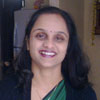If the civil society movements are any indication, the popular imagination of “change” goes beyond BJP’s interpretation of the same
As people in 13 states go to the polling booth today (April 17), the large turnout of voters in all the phases, especially in crucial states of Bihar and Uttar Pradesh, indicates the intensity of the 2014 electoral battle. If this trend of high voter turnout continues then this election may go down in history as a landmark in India’s democratic process.
Voter interest in these elections has given a fillip to the argument that there is Modi wave throughout the country. Is it really so?
High turnout is not a new phenomenon in Indian politics. After the low turnouts in the first three general elections, from the 1967 onwards voters turn out has always been above 55 percent. In particular the 1984, 1989, and 1996 elections saw large participation of the electorate. The 1984 elections, held in the aftermath of Indira Gandhi’s assassination, generated a wave of sympathy for the Congress. This, together with the youthful personality of Rajiv Gandhi, fuelled the popular imagination and resulted in large scale turnout. It is therefore not surprising that the Congress got its largest ever victory, with 76 percent seats and 48 percent of the votes.
Voter turnout in the 1989 was more a negative response to the charges of corruption raised by VP Singh in the Bofors gun deal case. It could be interpreted as a product of people’s misgivings – their dissatisfaction. It was a testimony that the issue of corruption evokes response from across all sections of the society and can be powerful motivator for participation. Since 1996 the above average turnouts have largely been the consequence of political assertion of Dalits, Muslims and women, particularly in the northern and north-western states of India, propelled by the large number of state parties that mobilized the people.
The 2014 election, however, appears to be different. Most obviously, the 2014 elections are being held at a time of severe economic turmoil. Inflation is high, and corruption has made the achievements of UPA-II look paper-thin. The government is perceived as being non–responsive, not just in economic matters but also on issues of law, security, and social justice. Multiple centers of power and lack of effective decision making have added to the woes of UPA-II. To top it all, the government is led by person who is seen as powerless in the in his own Cabinet. Manmohan Singh’s inability to take tough action on charges of corruption was the starting point of BJP’s campaign and continues to be its main plank. However, ineffective government, corruption charges, inflation and price rise are not unique to 2014.
This election has seen a renewed interest of all and particularly the middle classes – who have hitherto been reluctant participants – in the political process.
Though detailed figures of electoral participation are yet to be released, the large number of social activists, crusaders, academics and professionals who are in the fray, is itself indicative of the middle class interest. Interestingly, the 2014 elections were preceded by a series of civil society movements that saw large scale participation by the middle classes. The elections only appear to be the extension of the same exercise.
The 2014 elections seem to have become not just a democratic exercise but a patriotic exercise, a responsibility that cannot be taken lightly anymore. It has been built up as an exercise at “systemic change”, an exercise to rebuild the system anew and rid it of all negatives. The “systemic change” wave was initiated by the Anna Hazare’s movement in favour of the jan lokpal bill. The large number of young and would-be first-time voters eager to make a mark turned supporters of this movement and it not surprising that most of the volunteers for the Anna Hazare movement were young. Though the movement ultimately petered out the AAP that was born out of the movement rode on these sentiments to come to power in Delhi.
The BJP seems to have seized this plank. Its advertising campaign has harped on the need for change. The ‘din badlane wale hain’ series of television commercials clearly hints at this. BJP leaders have left no opportunity to reiterate that “voters want change”. However, what is change and how does BJP propose to bring about this change has been interpreted in number of ways by the party itself: change of government, change of leadership, development, efficiency, etc. Whether all these interpretations together constitute the “change” that the electorate wants is debatable. If the civil society movements are any indication, the popular imagination of “change” goes beyond BJP’s interpretation of the same.
There is no doubt that Narendra Modi seems to be riding on a wave. But, perhaps, what has gone unnoticed is that it is not the Modi wave that is sweeping the country; rather it is Modi who seems to be riding on a democratic wave for change.
